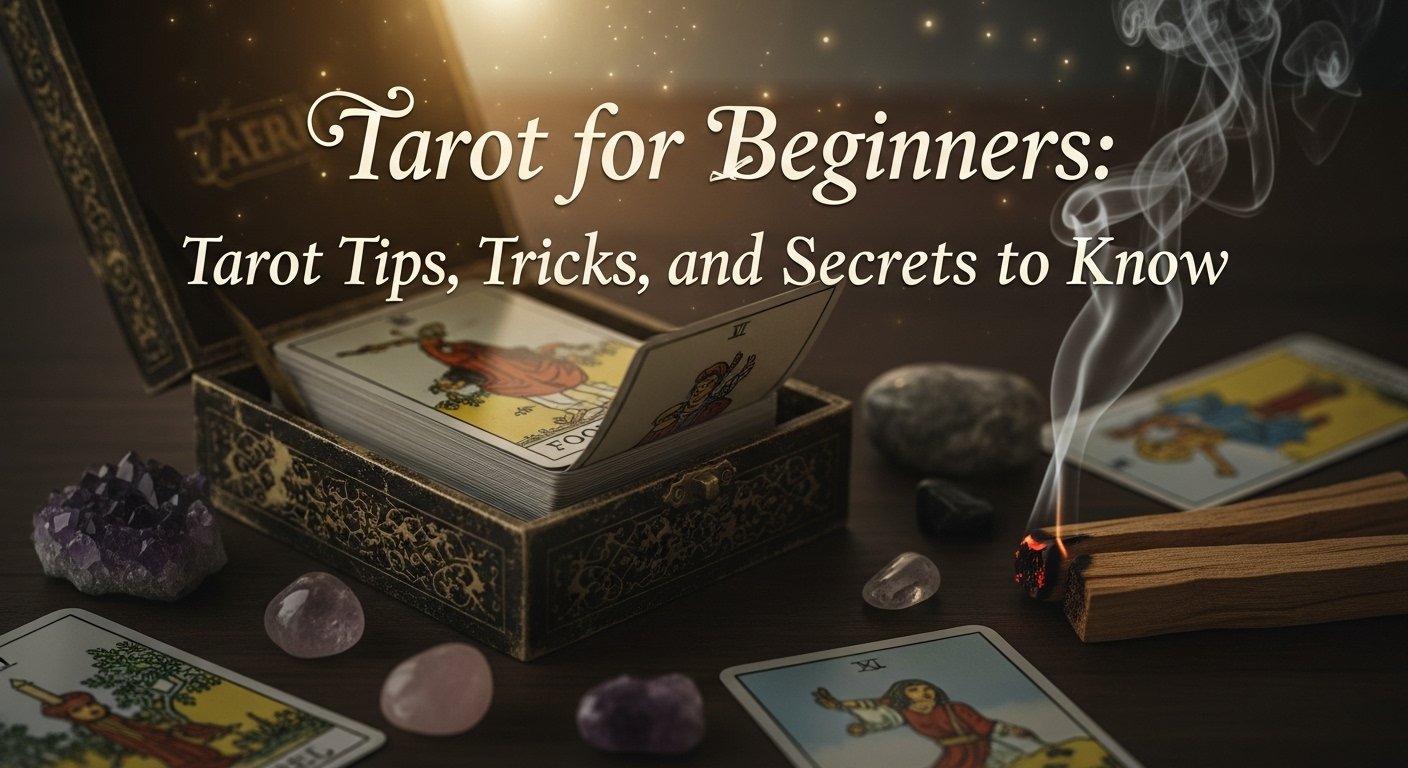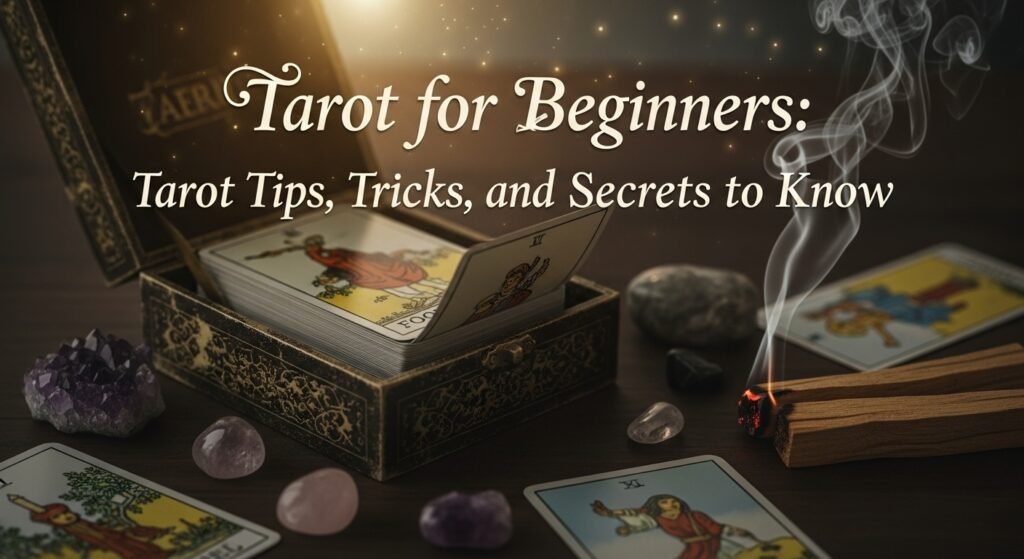
arot can feel mysterious and overwhelming at first glance—78 cards, rich symbolism, and centuries of tradition can seem like a lot to take in. But the truth is, tarot is a powerful tool for self-reflection, guidance, and spiritual growth that anyone can learn.
You don’t need to be psychic to read tarot; all you need is curiosity, practice, and a willingness to connect with your intuition. This guide will break down the basics of tarot and share essential tips, tricks, and secrets every beginner should know to start reading with confidence.
Understanding Tarot Basics
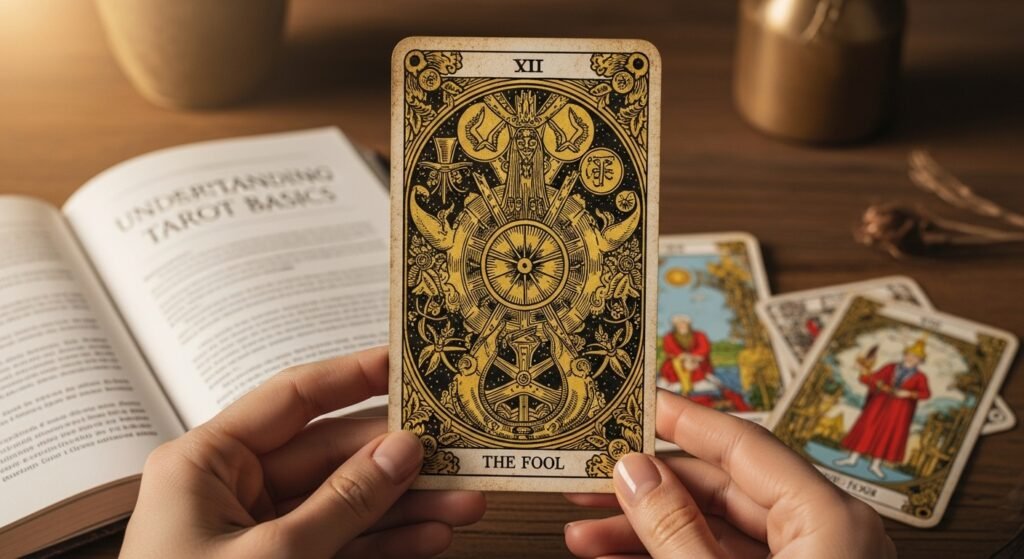
Before diving into tips, it helps to understand what tarot is:
- A Tarot Deck Has 78 Cards:
- Major Arcana (22 cards): Represents big life lessons, karmic influences, and spiritual growth.
- Minor Arcana (56 cards): Focuses on daily experiences, emotions, relationships, and practical matters.
- Four Suits in Minor Arcana: Cups (emotions), Wands (creativity, action), Swords (thoughts, challenges), and Pentacles (money, work, material world).
- Tarot Isn’t Fortune-Telling: It’s not about predicting a fixed future but offering guidance, insight, and clarity based on your current energy and choices.
Tarot Tips for Beginners
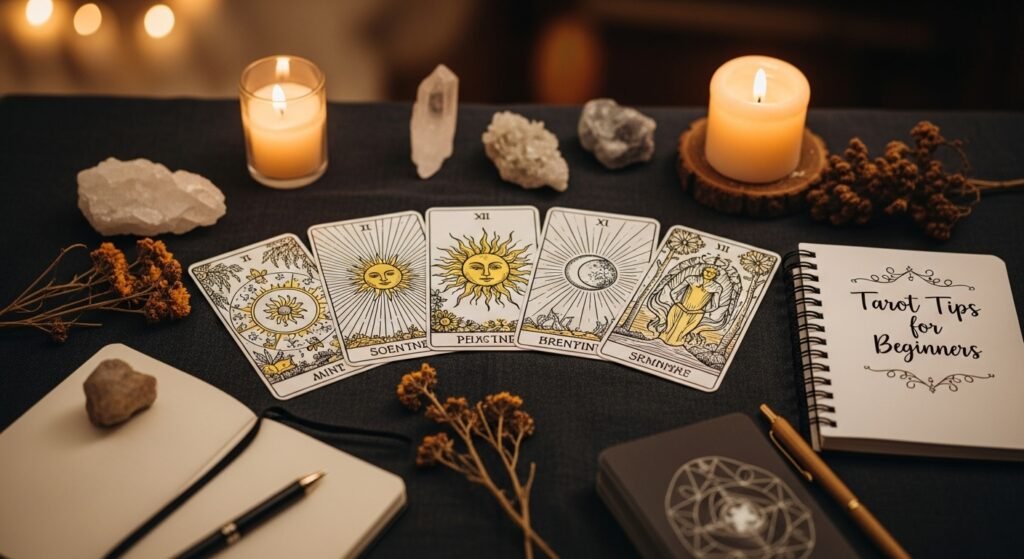
1. Choose a Deck That Speaks to You
Your first tarot deck should feel visually and energetically appealing to you. Pick one with artwork and symbolism that resonate, as this connection makes it easier to trust your intuition and build confidence in your readings from the very start.
2. Start With One-Card Pulls
Begin your tarot journey by pulling just one card a day to focus on. This simple practice helps you get comfortable with the imagery and meanings without feeling overwhelmed, while also building a daily connection with your deck and strengthening your intuition.
3. Learn Card Meanings Gradually

Instead of overwhelming yourself by trying to memorize all 78 cards at once, start with a few cards each week. Focus on their imagery, symbolism, and intuitive messages, then slowly build your knowledge. This steady approach helps you truly connect with the cards rather than just memorizing keywords.
4. Keep a Tarot Journal
Writing down your daily pulls, interpretations, and feelings helps you track patterns and deepen your understanding of tarot. Over time, your journal becomes a personal guidebook, showing how your intuition and card meanings evolve, making your readings more accurate and meaningful.
5. Ask Clear, Open-Ended Questions

Tarot works best when you ask open-ended questions that invite guidance rather than yes-or-no answers. Instead of asking, “Will I get this job?” try, “What can I do to align myself with the right career opportunity?” This approach allows the cards to provide deeper insight and actionable advice.
6. Practice Intuition Before Memorization
Instead of rushing to memorize every card meaning, take time to connect with your intuition first. Look at each card’s imagery and notice what feelings, symbols, or messages come up for you. This intuitive approach helps you build a personal relationship with your deck, making your readings more natural and insightful over time.
7. Cleanse and Protect Your Deck
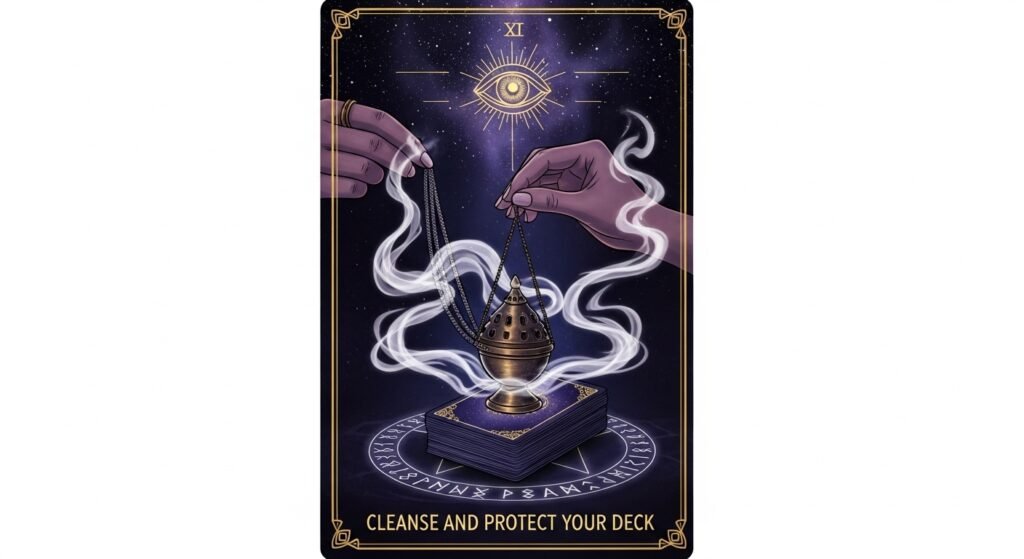
Tarot cards absorb energy, so it’s good to cleanse them regularly. You can:
- Knock or tap on your deck three times to clear energy.
- Place them under moonlight or with a crystal like selenite.
- Shuffle with intention before each reading.
8. Use Simple Spreads First
When you’re just starting out, stick to easy layouts like a single-card pull or a simple three-card spread for past, present, and future. These spreads are less overwhelming, allowing you to focus on interpreting the cards clearly and building confidence before moving on to more complex readings.
9. Respect Your Deck and Ritualize Readings
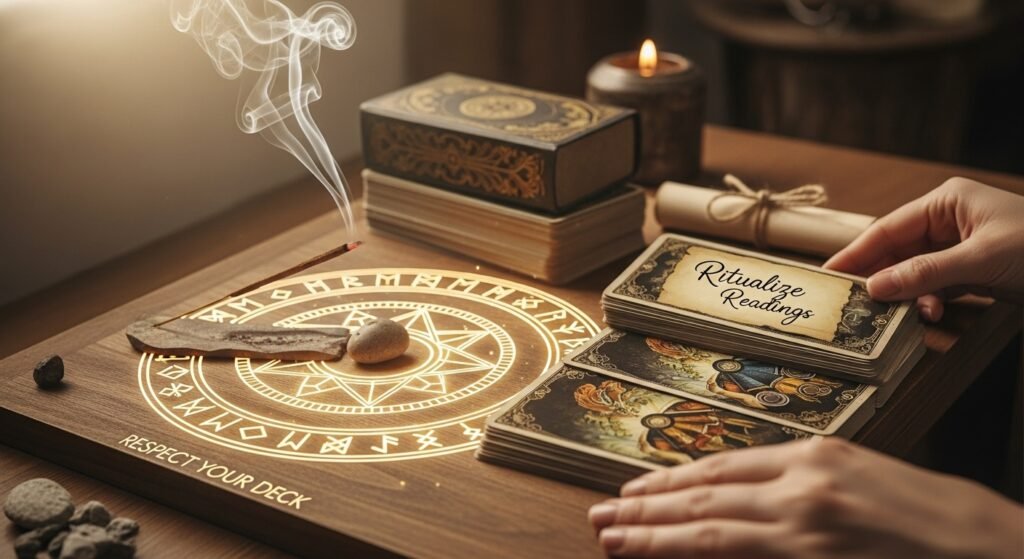
Treating your tarot deck with care builds a stronger connection and trust with your cards. Cleansing your deck, storing it in a safe space, and creating simple rituals—like lighting a candle or saying a prayer before a reading—can help you set clear intentions and invite positive energy, making your readings feel more meaningful and accurate.
10. Don’t Fear “Negative” Cards
Cards like Death, The Tower, or The Devil often get a bad reputation, but they aren’t meant to scare you. These cards represent transformation, lessons, and opportunities for growth rather than doom or disaster. Embracing their deeper meaning helps you see challenges as stepping stones, making your readings more empowering and insightful.
Tarot Tricks to Build Confidence

1. Use Visual Storytelling
Instead of memorizing every meaning word-for-word, focus on the imagery of each card. Look at the colors, symbols, and expressions—what story are they telling? This approach makes tarot reading more intuitive and personal, helping you connect with your deck and trust your instincts from the very beginning.
2. Pair Cards Together
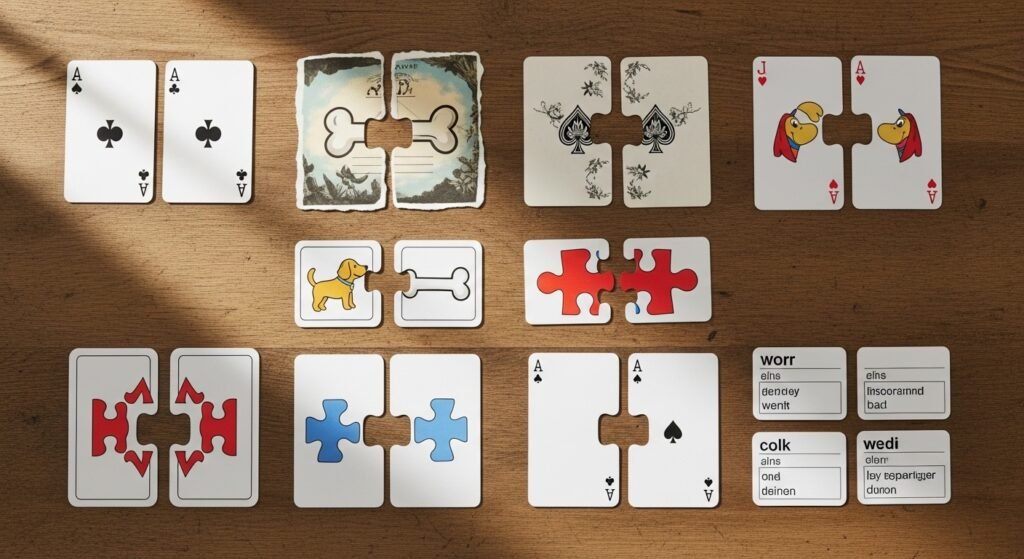
Learning to read tarot isn’t just about understanding individual cards—it’s about seeing how they interact. Try pulling two cards at a time and exploring how their energies combine or contrast. This practice helps you develop storytelling skills, making your readings flow naturally and offering deeper insights into situations.
3. Assign Keywords to Each Card
Start by associating one or two keywords with every card. For example:
- The Fool: New beginnings, risk.
- Strength: Courage, patience.
This simplifies memorization.
4. Practice on Yourself First
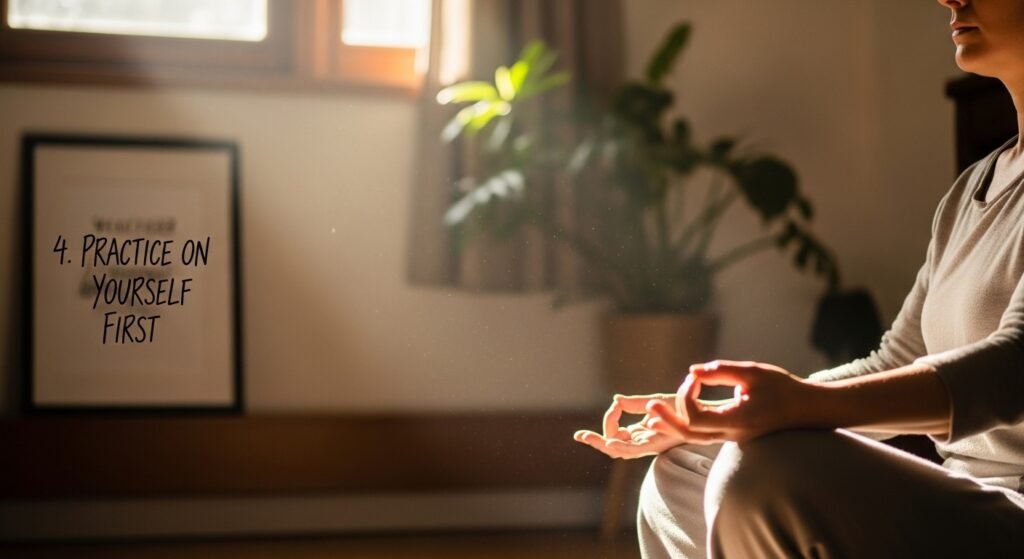
Before reading for others, start by practicing on yourself. Pull cards daily, write down your interpretations, and track how their meanings unfold in your life. This not only helps you learn the cards more deeply but also builds confidence and trust in your intuition before you begin offering readings to friends or clients.
5. Shuffle Mindfully
Shuffling isn’t just a way to mix the cards—it’s a chance to focus your energy and set your intention for the reading. Take your time, breathe deeply, and think about your question or situation as you shuffle. This mindful practice creates a stronger connection between you, your deck, and the messages you’re about to receive.
6. Incorporate Numerology and Astrology

Tarot becomes even more powerful when you connect it with other spiritual tools like numerology and astrology. The numbers on the cards carry symbolic meaning, and linking them with astrological signs or planetary influences adds depth and layers to your readings. This approach helps you see the bigger picture, turning each spread into a rich story instead of just separate messages.
Secrets Tarot Readers Know
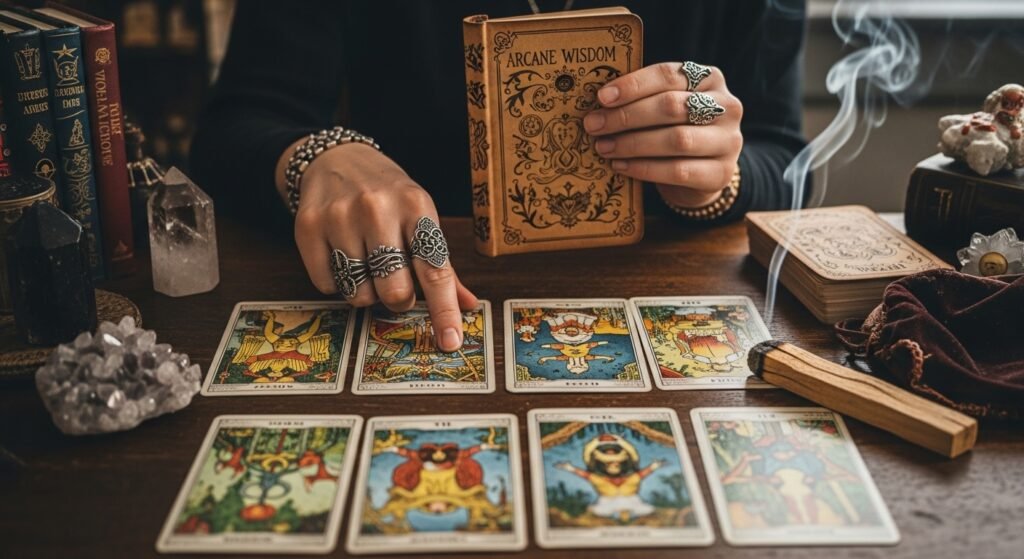
1. Your Energy Matters
Your mindset and emotions can deeply influence a tarot reading. If you’re anxious, distracted, or carrying heavy energy, it may cloud your connection with the cards. Centering yourself through grounding, deep breathing, or meditation before a reading helps create a clear channel for intuitive messages and ensures your readings feel aligned and accurate.
2. Reversals Aren’t Always Negative
When a tarot card appears upside down, it doesn’t always mean something bad is coming your way. Reversals often point to inner reflection, delays, or hidden influences rather than outright negativity. They can reveal where energy is blocked or invite you to look at a situation from a new perspective, making your readings richer and more nuanced.
3. Tarot Evolves With You
Your relationship with tarot will grow and change as you do. When you’re a beginner, you might rely heavily on guidebooks, but over time, your personal experiences, intuition, and spiritual growth will shape how you interpret the cards. The meanings aren’t fixed—they deepen and shift based on your journey, making tarot a lifelong tool for self-discovery and guidance.
4. Connection Beats Perfection
You don’t need to memorize every single tarot meaning perfectly to give a good reading—what matters most is your connection with the cards. When you focus on building trust with your deck, listening to your intuition, and letting the imagery speak to you, your readings become more authentic and insightful. True tarot magic comes from a personal bond, not textbook perfection.
5. Practice Makes Magic

Practice Makes Magic means that tarot reading becomes easier and more accurate the more you work with your cards. At first, it might feel confusing or slow, but with regular practice—like pulling a card each day, writing your interpretations, and experimenting with simple spreads—you’ll naturally start connecting the symbols and trusting your intuition. Over time, your readings will feel more natural, powerful, and “magical” because you’ve built a strong relationship with your deck.
Quick Beginner Tarot Spread
Here’s a simple Three-Card Spread to try:
- Card 1 – Situation: Where you are now.
- Card 2 – Challenge: The obstacle or energy influencing the situation.
- Card 3 – Advice: Guidance or action to take next.
Conclusion
Tarot is a powerful tool for self-awareness, spiritual growth, and decision-making, and anyone can learn it with patience and practice. Start small, trust your intuition, and focus on building a personal relationship with your deck. Over time, your tarot readings will feel like a conversation with your higher self—a guiding light on your journey.
